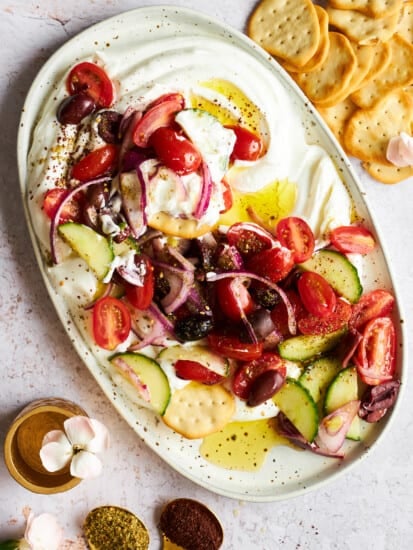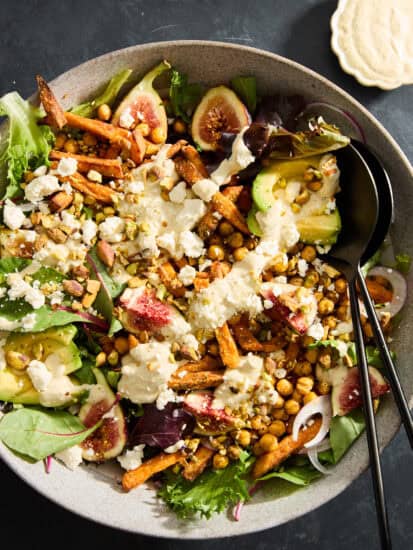This Bulgur Pilaf is the Middle Eastern superstar of hearty and nutritious side dishes! Packed with warm flavor, fresh veggies, and plenty of fiber, it’s a culinary hug on a plate. Whether you’re teaming it up with beef or chicken, stuffing it in pita bread, or eating it with a spoon, bulgur pilaf is a versatile side dish that will have everyone diving in for seconds!
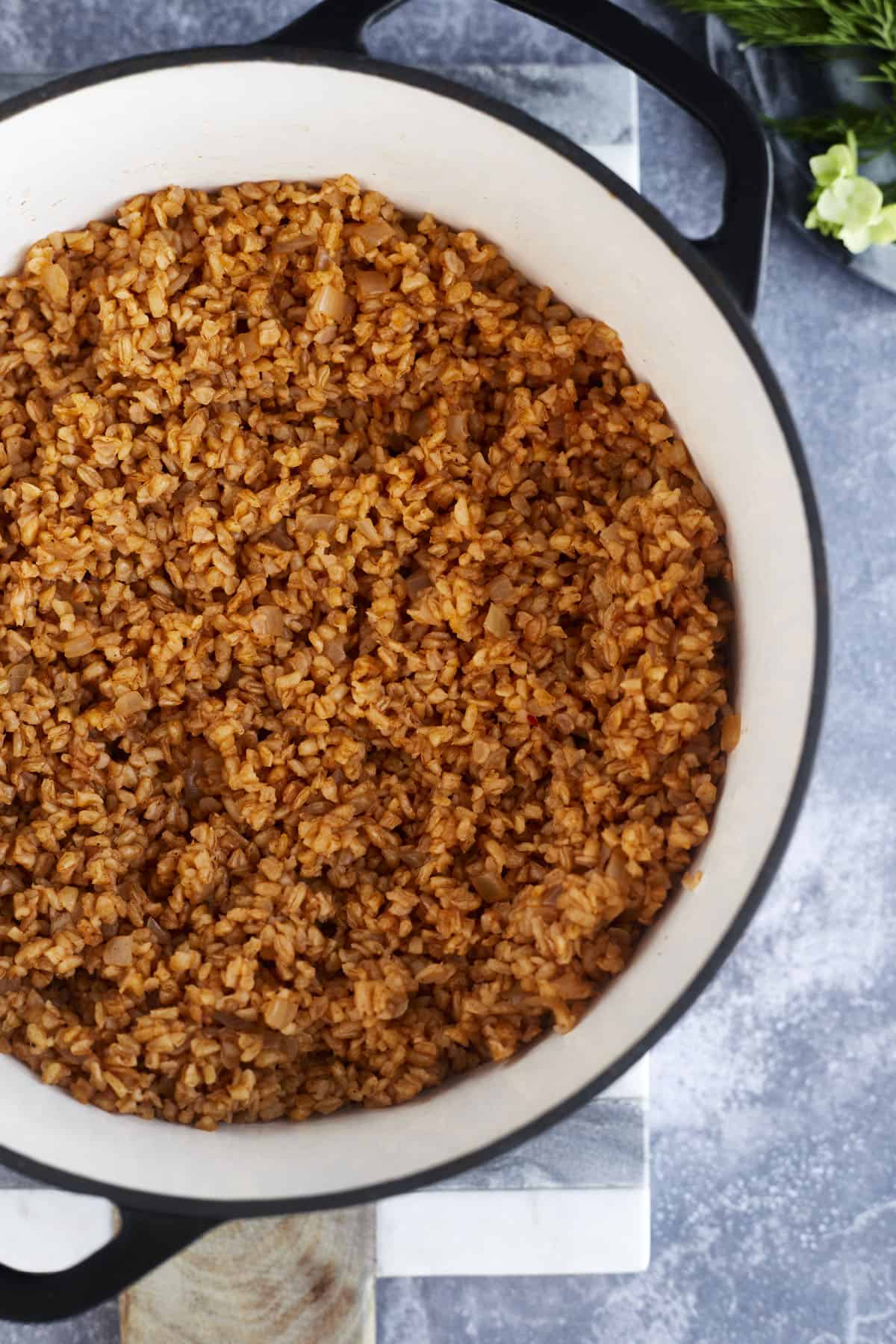
Table of Contents
What Is Bulgur?
Bulgur, also known as bulgar, is a cracked whole grain that is parboiled and dried to create a nutty flavor and slightly chewy texture. It is a staple in Middle Eastern recipes like tabouli. A nutritious ingredient, bulgur wheat is full of fiber and nutrients. In fact, it contains less fat and more fiber than brown rice, making it a satisfying option for all your favorite meals.
What’s the Difference Between Bulgur and Cracked Wheat?
Bulgur is simply cracked wheat that has been parboiled. As a result, cracked wheat takes longer to prepare and has a shorter shelf life.
Health Benefits of Bulgur
Considered to be a whole wheat, a single serving of bulgur provides almost 30% of the daily value of fiber. In addition, it’s a good source of a variety of vitamins, minerals, and plant-based protein. For example, it is particularly high in manganese, magnesium, and iron. As a result, consuming it as part of a balanced diet may help:
- Improve heart health
- Control blood sugar
- Support digestion
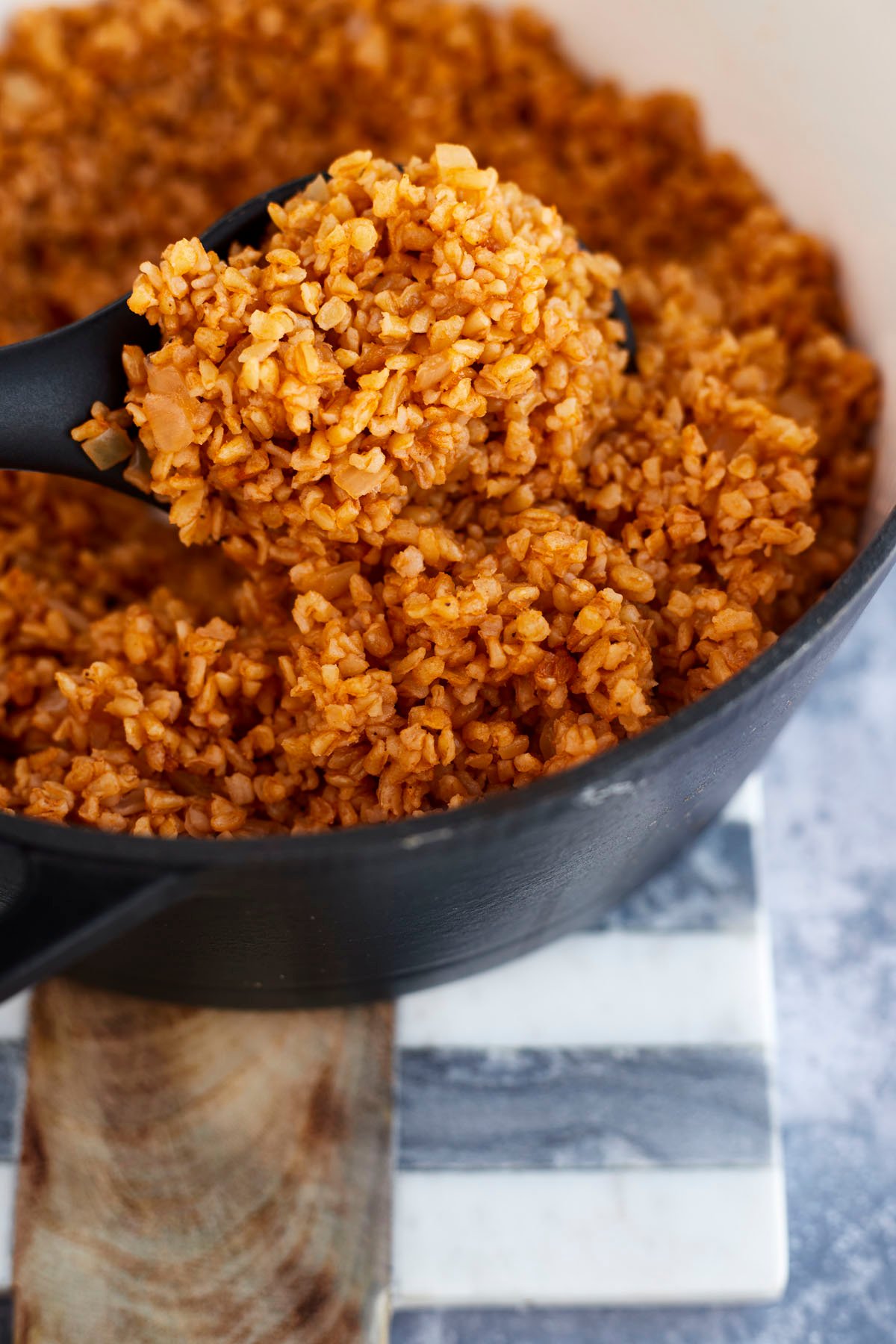
Ingredients You’ll Need
With just 9 pantry staple ingredients, we’re about to unravel the secret to crafting the most mouthwatering Bulgur Pilaf you’ll ever savor! Here’s the short and sweet lineup of what you’ll need:
- Bulgur – Uncooked bulgur forms the base of this dish.
- Olive Oil – Used to sauté the onions, creating a rich base and adding healthy fats for a well-rounded dish.
- Spices – Cumin, salt, and pepper, add just a touch of heat and plenty of flavor.
- Aromatics – Onion and garlic are sautéed to tender perfection for a hint of punchy sweetness.
- Tomato Paste – This helps add extra savory flavor and creates a thick texture we adore.
- Water – This is crucial to combine the ingredients and allow the bulgur to cook.
Flavor Variations
If you’re in the mood to amp up the volume on this recipe, let your culinary imagination run wild with various flavor variations and add-ins. Here are a few of our favorite ways to shake things up:
- Fresh Herbs – Fold in fresh herbs like mint or parsley for a light, refreshing taste.
- Nuts – Add extra crunch with chopped nuts like almonds or peanuts
- Protein – Include chickpeas, ground, turkey, or ground beef to transform this side into a complete meal.
- Veggies – Add a boost of nutrients and texture with veggies like carrots, bell peppers, broccoli, and mushrooms.
How to Make Bulgur Pilaf
If you’ve never made bulgur pilaf, don’t be intimidated! It’s as easy as whipping up rice or quinoa.
- Prepare the Bulgur. Before you begin, you’ll want to rinse and drain the bulgur a few times to eliminate any debris or extra starch and set it aside.
- Sauté. Heat the oil in a large pot over medium heat, and sauté the onion until it is translucent. Then, stir in the minced garlic and cumin, and continue to cook until fragrant.
Pro-Tip: Make sure you use a big enough pot! Bulgur will more than double in volume as it cooks so you’ll want to make sure it has plenty of room to expand.
- Combine. Add the tomato paste, stirring until it is well combined. Then, sprinkle in the salt and pepper, and add the bulgur to the pot. Stir again to combine.
- Cook. Turn the heat to medium-high, and add the water. Once simmering, reduce the heat, cover the pot with a lid, and let the ingredients cook until the water is almost completely evaporated.
- Rest. Remove the pot from the heat, and let the bulgur pilaf sit. After about 5 minutes, fluff it with a fork, and enjoy!
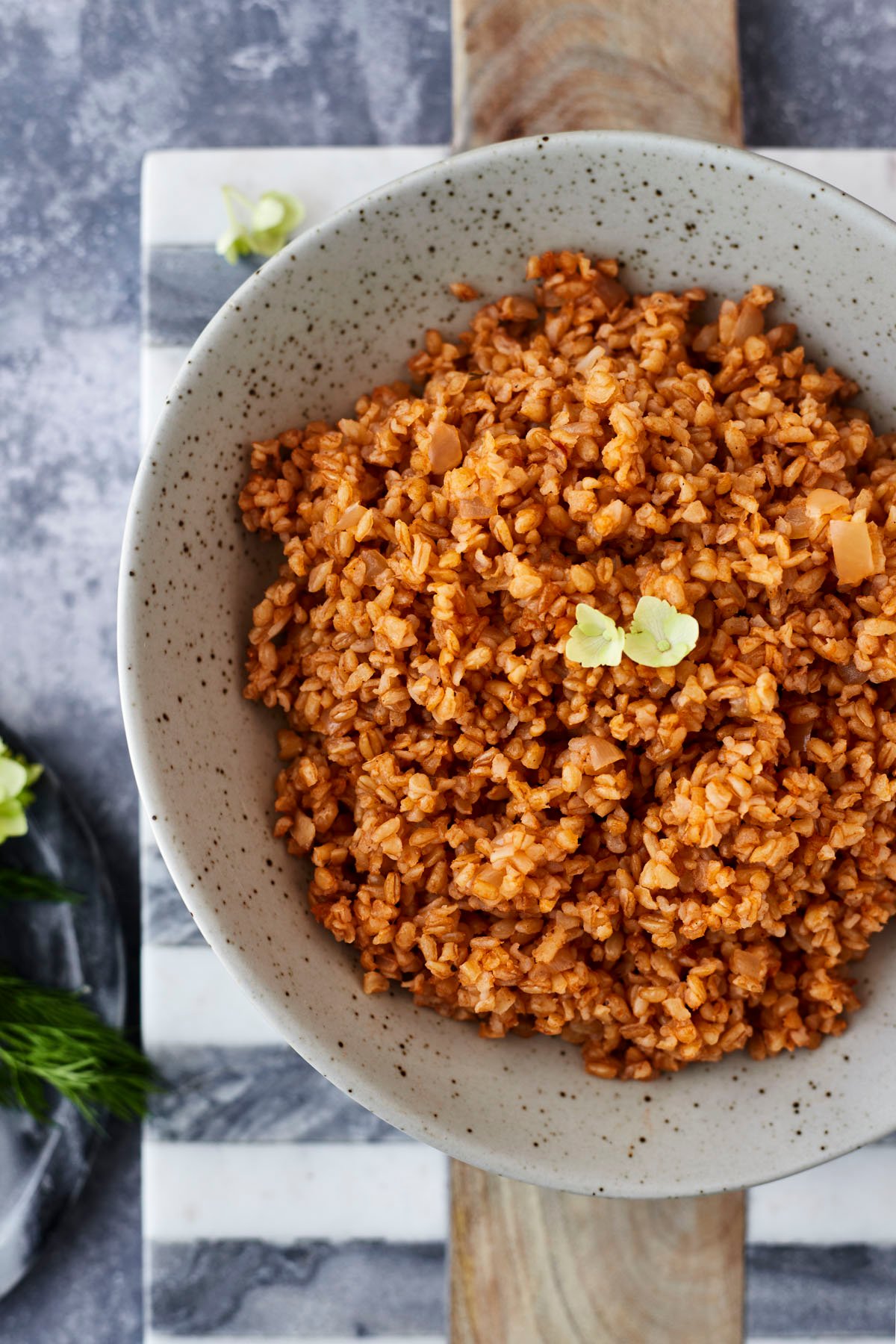
Serving Suggestions
Bulgur pilaf can fit into your meals in the same seamless way as any other grain. Here are some of our top picks for pairing with bulgur pilaf:
- In grain bowls with beef kofta, chicken kofta, or Greek meatballs
- Stuffed into pita sandwiches
- Tossed with salads
- As a side with protein sources like Middle Eastern chicken or baked feta Salmon
How to Store
Once cooked and fully cooled, bulgur pilaf can be transferred to an airtight container and stored in the fridge for 3-5 days. When you’re ready to eat, just pop it in the microwave in 30-second intervals until it is heated through!
Bulgur Pilaf Common Questions
No, bulgur contains wheat, meaning it has gluten.
Bulgur can often be found in the ethnic food section of grocery stores. Or, it is easy to find online!
Yes, bulgur can be found in different sizes and textures including fine, medium, and coarse. The finer your bulgur, the faster it will cook.
More Side Dish Recipes
Craving more hearty side dishes to complement your favorite meals? Dive into drool-worthy deliciousness with our staple suggestions below.
- One Pot Greek Couscous
- Egyptian Baked Rice (Roz Maamar)
- One Pot Mexican Quinoa Recipe
- Coconut Turmeric Rice
- Easy Tabbouleh Salad Recipe

Bulgar Pilaf Recipe
Ingredients
- 2 cups coarse bulgur rinsed and drained
- 2 Tablespoons olive oil
- 2 teaspoons cumin
- 1 large onion diced
- 2 cloves garlic minced
- 1 Tablespoon tomato paste
- 1/2 teaspoon salt
- 1/2 teaspoons black pepper
- 3 1/2 cups water
Instructions
- Place the bulgur in a bowl, and rinse a few times. Set it aside.
- Heat the olive oil in a large pot over medium heat. Sauté the onion until translucent. Add the minced garlic and cumin, cooking for 1 minute or until fragrant.
- Add the tomato paste, and stir to combine.
- Add the salt, pepper, and rinsed bulgur. Stir again to combine.
- Turn the heat to medium-high, and add the water. Bring the ingredients to a simmer. Then, reduce the heat to medium, cover the pot with a lid, and cook 20-25 minutes until the water is almost completely evaporated.
- Remove the pot from the heat, and let the bulgur sit for 5 minutes. Fluff it with a fork, and enjoy!
- Store in an airtight container in the fridge for 3-5 days.
Would you like to save this? 🔖
Nutrition
Nutrition information is automatically calculated, so should only be used as an approximation.
